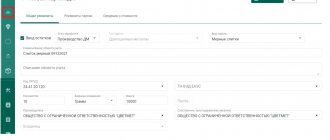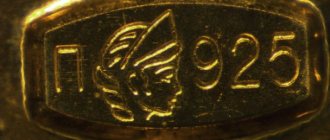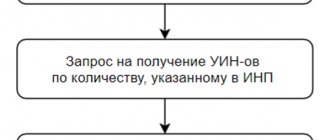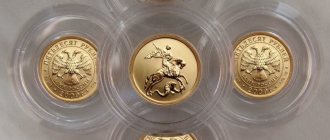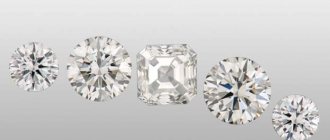06/01/2021 11:54 State
According to Decree of the Government of the Russian Federation dated February 26, 2021 No. 270 “On certain issues of control over the circulation of precious metals, precious stones and products made from them at all stages of this circulation and amendments to certain acts of the Government of the Russian Federation”, in the 3rd quarter In 2021, the jewelry industry will face a number of new demands.
From August 1, 2022 , organizations that have the right to refining precious metals voluntarily enter into the GIIS DMDK information (information) on the receipt of raw materials containing precious metals, as well as on the shipment (sale) of refined precious metals in all types, products made from refined precious metals, waste and intermediate products containing precious metals;
Also, from August 1, legal entities and individual entrepreneurs engaged in the production and (or) repair of jewelry made of precious metals and precious stones voluntarily enter into the GIIS DMDK information (information) about the receipt of precious metals and precious stones used for their production, as well as on the shipment (sale) of finished products;
From August 1, the territory of the Russian Federation will introduce voluntary application of a two-dimensional bar code directly to individual jewelry and other products made of precious metals and precious stones, as well as a unique identification number on their labels, with information about these products being entered into the GIIS DMDK.
We are talking about jewelry and other products made of precious metals and (or) precious stones accepted for commission from citizens (individuals) who are not individual entrepreneurs, and unclaimed jewelry and other products made of precious metals and (or) precious stones, for which pawnshops foreclosure has been made.
From September 1, 2022, on the territory of the Russian Federation, special accounting operations (setting up, deleting, making changes), as well as operations for registering personal names, are carried out exclusively in the GIIS DMDK.
Also from this date:
— organizations that have the right to carry out refining of precious metals enter into the GIIS DMDK information (information) on the receipt of raw materials containing precious metals, as well as on the shipment (sale) of refined precious metals in all types, products made from refined precious metals, waste and intermediate products containing precious metals;
— legal entities and individual entrepreneurs voluntarily enter certain information (information) into the GIIS DMDK.
In addition, changes have been made to the Operating Procedure of organizations engaged in refining precious metals (approved by Decree of the Government of the Russian Federation of August 17, 1998 N 972), Rules for maintaining special records of legal entities and individual entrepreneurs carrying out transactions with precious metals and precious stones (approved by Decree Government of the Russian Federation dated October 1, 2015 N 1052) and Rules for registration, production of name tags, as well as the placement and destruction of their imprints (approved by Decree of the Government of the Russian Federation dated October 21, 2015 N 1127).
For example, it has been established that refinery organizations submit to the Federal Assay Office information on the receipt and shipment of precious metals in any condition and form according to approved forms on paper, in electronic form and (or) by sending them to the GIIS DMDK.
It has been clarified that legal entities and individual entrepreneurs selling products made from base metals coated with precious metals are not subject to special registration.
The procedure for registering a name in the GIIS DMDK has been determined.
RULES FOR REGISTRATION, PRODUCTION OF NAME LOCKS, AS WELL AS ESTABLISHING AND DESTROYING THEIR IMPRESSIONS
List of amending documents (as amended by Resolutions of the Government of the Russian Federation dated April 25, 2020 N 584, dated February 26, 2021 N 270) 1. These Rules determine the procedure for registration, production of name tags, as well as the placement and destruction of their imprints on products produced (repaired) by legal entities and individual entrepreneurs in jewelry and other products made of precious metals.
2. Legal entities and individual entrepreneurs engaged in the production (repair) of jewelry and other products made of precious metals (hereinafter referred to as the manufacturer), register names and put their stamps on the jewelry and other products made of precious metals they produce (repair) in the manner established by these Rules.
3. Registration of names is carried out by the Federal Assay Chamber.
The procedure for maintaining the register of registered persons is approved by the Ministry of Finance of the Russian Federation.
Registration of names is carried out in the state integrated information system in the field of control over the circulation of precious metals, precious stones and products made from them at all stages of this circulation (hereinafter referred to as GIIS DMDK).
4. To register a personal name, the manufacturer, through his personal account in the GIIS DMDK, sends to the Federal Assay Office an application for registration of the personal name, signed with an enhanced qualified electronic signature of the head of the manufacturer or a user authorized by the head of the manufacturer to enter information into the GIIS DMDK and to sign documents on behalf of the manufacturer in the GIIS DMDK.
The application form, the structure of information entered into the form, the procedure for its formation and receipt of confirmation of its acceptance are determined by the Federal Assay Office.
The manufacturer applies to the territorial body of the Federal Assay Chamber, in the area of operation of which it is located, with an application to obtain the name code required for the production of the name.
When registering a name, the manufacturer submits to the territorial body of the Federal Assay Office an imprint of the name stamped on a polished plate.
The exception is the affixing of the name stamp, combined with the state hallmark, using the laser method by the territorial bodies of the Federal Assay Office. In this case, there is no need to stamp the name on the polished plate.
If the name tag will be affixed using different methods (mechanical, electric spark, laser), each imprint of the name tag is stamped on the polished plate.
The imprint of the name must be clear, undeformed and contain all elements (signs).
5. In case of poor-quality production of the name plate (fuzzy, deformed or not containing all elements (marks), as well as non-compliance with the information contained in the documents specified in paragraph 4 of these Rules, the territorial body of the Federal Assay Office has the right to refuse its registration.
5(1). The processing time for an application for registration of a name by the territorial bodies of the Federal Assay Chamber should not exceed 5 working days from the date the manufacturer fulfills the conditions specified in paragraph 4 of these Rules.
A notification of the adoption of the relevant decision, signed with an enhanced qualified electronic signature of an authorized person of the Federal Assay Office, is posted in the GIIS DMDK in the manufacturer’s personal account. The notification form is approved by the Federal Assay Office.
6. The production of the name tag is carried out by the manufacturer. The name plate contains a code assigned to the manufacturer by the territorial body of the Federal Assay Chamber, containing in encrypted form information about the year of manufacture of the product, data about the territorial body of the Federal Assay Chamber that registered the name plate, and the manufacturer of the product.
The contents of the name code are determined by the Federal Assay Office.
7. The name is valid for the calendar year in which it was registered.
Upon expiration of the validity period of the name tag, it must be destroyed by the manufacturer.
8. Lost power. — Decree of the Government of the Russian Federation dated February 26, 2021 N 270.
9. The territorial bodies of the Federal Assay Office carry out stamping of name marks on jewelry and other products made of precious metals, made by the electric spark method and laser method when branding with a state hallmark with a combined name mark, at the request of the manufacturer.
10. Lost power. — Decree of the Government of the Russian Federation dated February 26, 2021 N 270.
11. Imprints of unregistered names on jewelry and other products made of precious metals identified during the examination are subject to destruction by the territorial bodies of the Federal Assay Office.
Approved by Decree of the Government of the Russian Federation of October 1, 2015 N 1052
How to get a gold mining license
A license for gold mining in the Russian Federation was issued only to legal entities. Individuals were prohibited from removing metal from the subsoil. This provision is regulated by Article 191 of the Criminal Code of the Russian Federation. To mine gold, registration of an LLC or OJSC was required.
This was the case until 2016. At the initiative of Dmitry Medvedev, amendments were made to the legislative framework, according to which private individuals can also obtain a license.
Since the soil from which metals are extracted belongs to the state, issuing permits is included in the list of responsibilities of the state agency RosNedra.
It has branches and divisions such as ". In some cases, the Ministry of Nature of the Russian Federation is involved in the process of issuing a license. It is responsible for auctions for the rights to develop particularly large deposits. Thus, in 2016, the Ministry of Natural Resources decided the fate of Sukhoi Log (one of the largest gold sources in Russia). When purchasing an enterprise for the extraction of gold or precious sands, you do not have to obtain a license, but re-register the old one in your name.
A license for individuals is issued only for those places that contain less than 10 kilograms of gold raw materials.
Features of the license for private owners
If the plan is exclusively for gold mining, the license period will be no more than 20 years.
If, in addition to mining, geological research and soil analysis take place, the period can be 25 years. It is not difficult to calculate that a license for geological research without the possibility of gold mining is issued for 5 years. All of the above applies to legal entities. For private individuals, the license period is 5 years, and they are also subject to restrictions on the choice of site for production. The use of powerful equipment (bulldozers, drilling machines) is also prohibited. The motivation for this restriction remains a mystery, because the more gold private owners extract, according to the license, the greater the tax levy will be paid. For individuals this is a good income, while for industry leaders it is “small fish”.
License cost for individuals
The price of a gold mining license depends on the method of obtaining it. There are a number of companies that provide document preparation services for only 100 -200 thousand rubles.
Interesting: We buy silver bars at Sberbank - nuances and prices
All that is required from the client is material resources; all other concerns are handled by the company providing the services. If gold is extracted from ore, $15-20 million will be required. Against the background of such a contribution, 100 thousand rubles does not seem such a big amount. Such a high entry threshold allows only those who clearly see the goal and go towards it to engage in mining, weeding out scammers and fly-by-night companies.
How to save money?
If you apply for a license yourself, providing all the documents, running through the authorities, the cost will be 7,500 rubles. Re-registration will cost 750 rubles. It is worth understanding that in this case the deadlines will be much longer, since there is no clearly established algorithm and the shortest path to obtaining documentation has not been worked out (like with professional agencies).
Main gold mines and deposits in Russia
| Region | Description |
| Amur region | The site was closed back in the mid-70s. All tributaries have been washed several times since the beginning of the 19th century. Many landfills have been worked out, as they say, “to magma.” The remains of gold are scattered across rocky areas and depressions, so it is advisable to search for it manually. |
| Yakutia | Modern gold mining site. In an hour of working with a metal detector, you can collect 50 grams of gold. When trying to process the site using an industrial method, the result is the same: the bulldozer collects 500-600 tons of “crackers”, of which the same 50 grams are available at the output. |
| Kolyma | The landfill was considered “empty”, since all deposits were exhausted back in the 90s. However, in 2005, signals and signs were noticed deep in the rock deposits, thanks to which it was possible to extract 15 kg of gold. Experts came to the conclusion that part of the precious metal is located directly in the rock. |
| Magadan Region | The largest region in the Russian Federation. Mining is carried out by 183 companies, of which 130 specialize in placer mining. The scale of production is 14-15 tons per year. |
Developed fields
Unlike those described above, such areas are located mainly in depressions and occur in Cretaceous and Jurassic sedimentary massifs, sandstones, conglomerates and mudstones. These veins are located in powerful cracks and fault zones and represent chalcedony-like quartz with kaolin and carbonate inclusions. Less commonly, such places are found in granite.
Low-temperature veins, as a rule, do not form placer gold deposits, so identifying industrial sites involves certain difficulties, especially since the veins themselves are hidden under heavy, loose soil formations.
Gold in such regions is finely dispersed, of low purity, green or bluish in color and practically invisible to human vision.
Stockwork deposits
When aurum is associated with quartz or sulfides dispersed in fractures in the form of a series of thin veins or in the form of thin inclusions in the rock, such places are called stockworks. They can contain both high and low temperature minerals. Stockwork deposits, as a rule, are large in size, the length of which is measured in kilometers. It is also profitable to cultivate such areas, since open-pit mining can be organized.
History of gold mining in the Russian Federation
Gold mining in the Russian Federation for private individuals was prohibited in 1954. During Stalin's time, working in this area was a little easier. The state provided additional payments for gold seekers and gave them the right to develop the richest gold mines. To intensify labor, housing, vouchers to sanatoriums and resorts, etc. were provided.
Before the Great Patriotic War, every adult citizen without a criminal record could be employed in gold mining. About 120 thousand gold miners were employees of non-state enterprises.
State income before and after the amendment
Large companies mined enough gold to cover the needs of the state, and even export some abroad. However, small deposits still made up a significant part, but their location was irrational for organizing large enterprises in each individual area.
After the adoption of the law, a new type of gold mining appeared - “mobile”. Private organizations act faster, are able to move long distances, and act locally, because they do not use bulky equipment and are not tied to one point. State income in 2 years, after the adoption of the law, increased by about 21%, which is very much for such a short period.
World gold production and Russia’s role in it
In 2009, Russia ranked 4th in the world, its share was only 7.2% of the total volume of gold mined in the world. At the moment, Russia is in second place, with an indicator of 11.4% and a volume of 402 tons of gold per year.
Quantity of gold as a political tool
The value of money is secured by gold reserves, being its equivalent and a convenient tool for barter and trade relations. The 2007 crisis showed how much the position of a country whose currency is the most popular in the world can change. However, the price of gold did not fall at all, but rather increased slightly. If you look at the chart on a 100-year scale, you can see that the price of gold has fluctuated at times, but overall the upward trend is positive.
Chapter II. GOVERNMENT FUNDS AND RESERVES OF PRECIOUS METALS AND PRECIOUS STONES
Article 5. Federal Fund for Reserve Deposits of Precious Metals and Precious Stones
- The Federal Fund for Reserve Deposits of Precious Metals and Precious Stones is formed in order to regulate the volume of production of precious metals and precious stones, as well as to meet the future needs of the Russian Federation in precious metals and precious stones.
- The federal fund of reserve deposits of precious metals and precious stones includes individual explored deposits of precious metals and precious stones that are registered with the state and have not been transferred for use or withdrawn from use.
- The decision to include individual explored deposits in the federal fund of reserve deposits of precious metals and precious stones is made by the President of the Russian Federation together with the state authorities of the constituent entities of the Russian Federation.
- The disposal of the federal fund for reserve deposits of precious metals and precious stones is carried out by the Government of the Russian Federation in the manner established by the legislation of the Russian Federation on subsoil. The conditions for the use of explored deposits of precious metals and precious stones included in the federal fund of reserve deposits of precious metals and precious stones are agreed upon with the executive authorities of the constituent entities of the Russian Federation in whose territories these deposits are located.
Pages: 1
